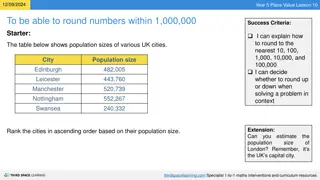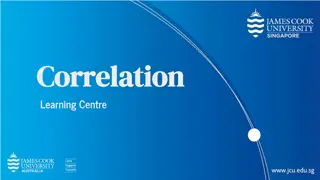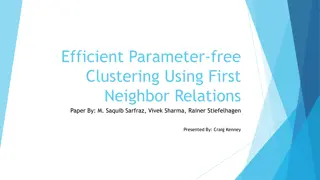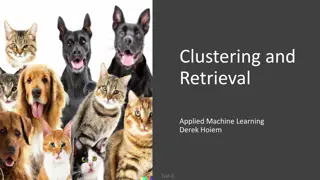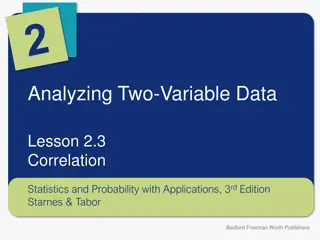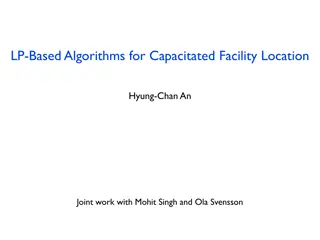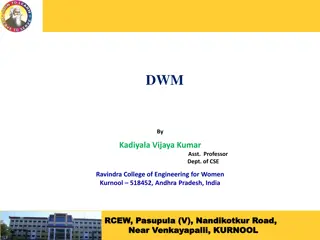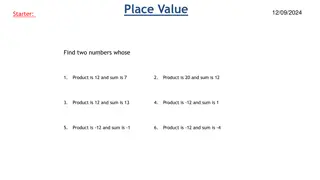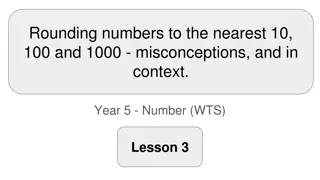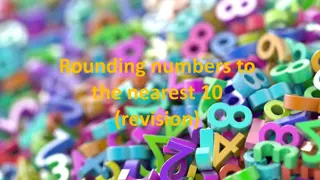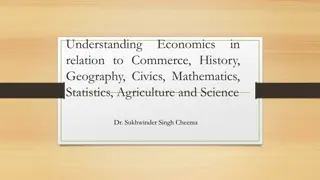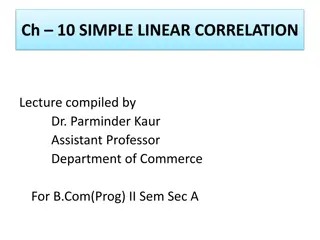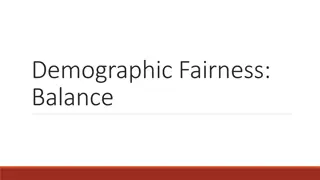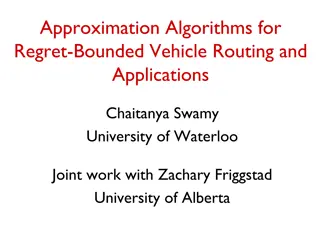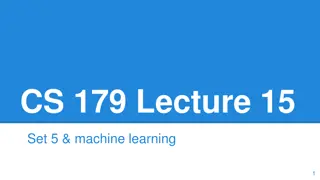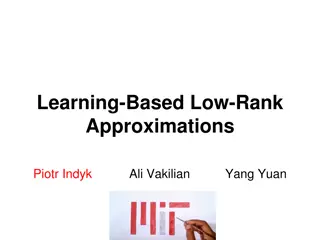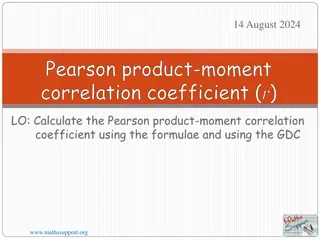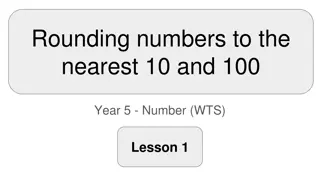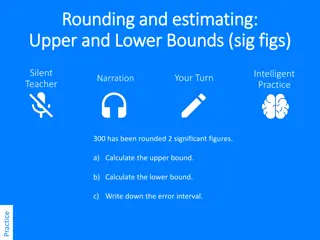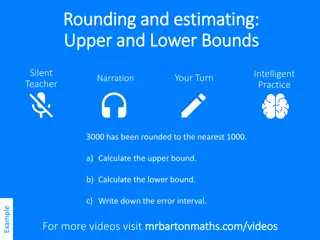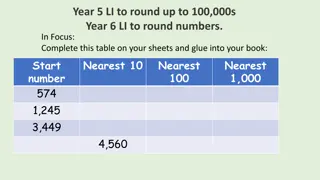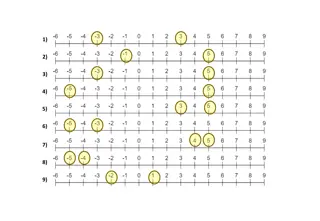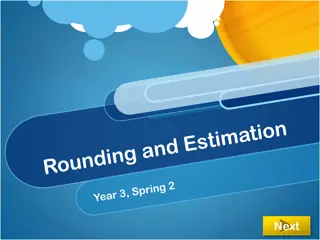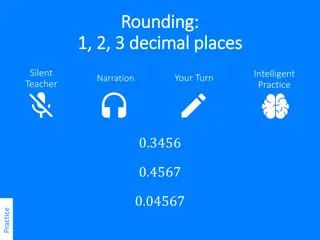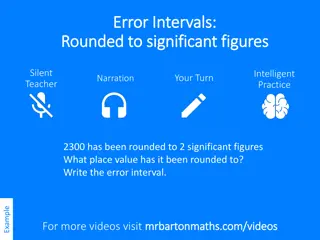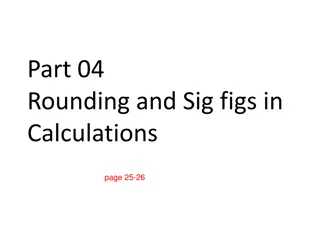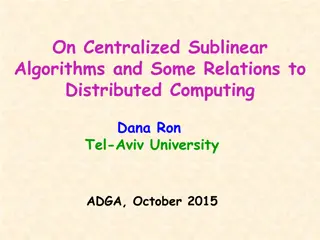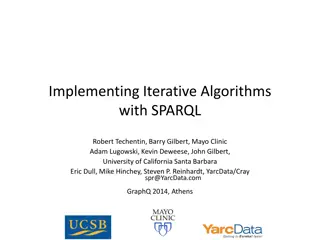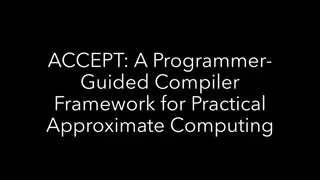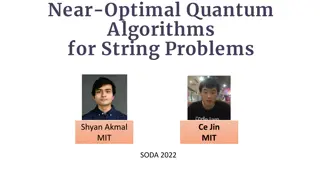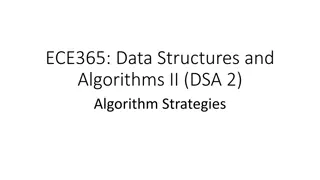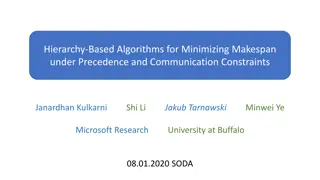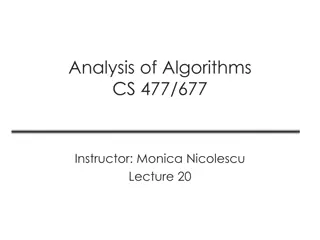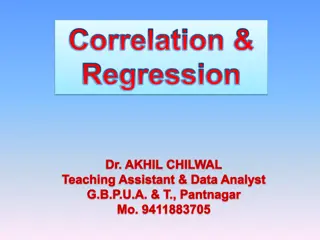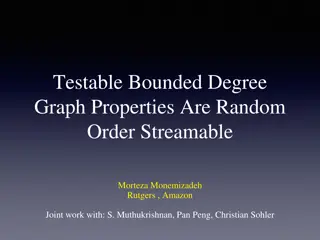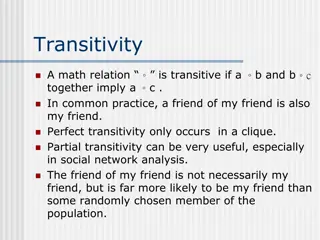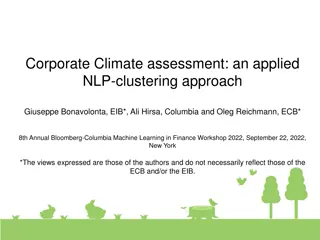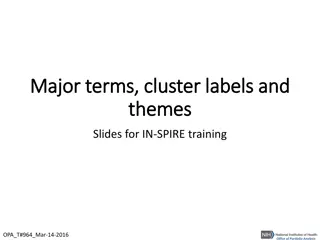Correlation Clustering: Near-Optimal LP Rounding and Approximation Algorithms
Explore correlation clustering, a powerful clustering method using qualitative similarities. Learn about LP rounding techniques, approximation algorithms, NP-hardness, and practical applications like document deduplication. Discover insights from leading researchers and tutorials on theory and practice in correlation clustering.
Download Presentation

Please find below an Image/Link to download the presentation.
The content on the website is provided AS IS for your information and personal use only. It may not be sold, licensed, or shared on other websites without obtaining consent from the author. Download presentation by click this link. If you encounter any issues during the download, it is possible that the publisher has removed the file from their server.
E N D
Presentation Transcript
Near-Optimal LP Rounding for Correlation Clustering Grigory Yaroslavtsev http://grigory.us With Shuchi Chawla (University of Wisconsin, Madison), Konstantin Makarychev (Microsoft Research), Tselil Schramm (University of California, Berkeley)
Correlation Clustering Inspired by machine learning at Practice: [Cohen, McCallum 01, Cohen, Richman 02] Theory: [Blum, Bansal, Chawla 04]
Correlation Clustering: Example Minimize # of incorrectly classified pairs: # Covered non-edges + # Non-covered edges 4 incorrectly classified = 1 covered non-edge + 3 non-covered edges Min-CSP, but # labels is unbounded
Approximating Correlation Clustering Minimize # of incorrectly classified pairs 20000-approximation [Blum, Bansal, Chawla 04] [Demaine, Emmanuel, Fiat, Immorlica 04],[Charikar, Guruswami, Wirth 05], [Williamson, van Zuylen 07], [Ailon, Liberty 08], 2.5 [Ailon, Charikar, Newman 05] APX-hard [Charikar, Guruswami, Wirth 05] Maximize # of correctly classified pairs (1 ?)-approximation [Blum, Bansal, Chawla 04]
Correlation Clustering One of the most successful clustering methods: Only uses qualitative information about similarities # of clusters unspecified (selected to best fit data) Applications: document/image deduplication (data from crowds or black-box machine learning) NP-hard [Bansal, Blum, Chawla 04], admits simple approximation algorithms with good provable guarantees Agnostic learning problem
Correlation Clustering More: Survey [Wirth] KDD 14tutorial: Correlation Clustering: From Theory to Practice [Bonchi, Garcia-Soriano, Liberty] http://francescobonchi.com/CCtuto_kdd14.pdf Wikipedia article: http://en.wikipedia.org/wiki/Correlation_cluster ing
Data-Based Randomized Pivoting 3-approximation (expected) [Ailon, Charikar, Newman] Algorithm: Pick a random pivot vertex ? Make a cluster ? ?(?), where ? ? is the set of neighbors of ? Remove the cluster from the graph and repeat Modification: (3 + ?)-approx. in ?(log2?/ ?) rounds http://grigory.us/blog/mapreduce-clustering of MapReduce [Chierichetti, Dalvi, Kumar, KDD 14] http://grigory.us/blog/mapreduce-clustering
Data-Based Randomized Pivoting Pick a random pivot vertex ? Make a cluster ? ?(?), where ? ? is the set of neighbors of ? Remove the cluster from the graph and repeat 8 incorrectly classified = 2 covered non-edges + 6 non-covered edges
Integer Program Minimize: ?,? ????+ ?,? ?(1 ???) ??? ???+ ??? ??? {0,1} Binary distance: ???= 0 ? and ? in the same cluster ???= 1 ? and ? in different clusters Objective is exactly MinDisagree Triangle inequalities give transitivity: ???= 0,???= 0 ???= 0 ? ? iff ???= 0 is an equivalence relation, equivalence classes form a partition ?,?,?
Linear Program Embed vertices into a (pseudo)metric: Minimize: ?,? ????+ ?,? ?(1 ???) ??? ???+ ??? ??? [0,1] ?,?,? Integrality gap 2 o(1)
Integrality Gap Minimize: ?,? ????+ ?,? ?(1 ???) ??? ???+ ??? ??? [0,1] ?,?,? IP cost = n 2 LP solution ???: ?for edges (?,??) 1 for non-edges ??,?? LP cost = (n - 1) IP / LP = 2 o(1) ? ? ? ? ? ? ? ? ? ? ? ? ? ? ? ? ? ?? ?? ?? ?? ?
Can the LP be rounded optimally? 2.06-approximation Previous: 2.5-approximation [Ailon, Charikar, Newman, JACM 08] 3-approximation for objects of ? types (comparisons data only between different types) Matching 3-integrality gap Previous: 4-approximation for 2 types [Ailon, Avigdor- Elgrabli, Libety, van Zuylen, SICOMP 11] 1.5-approximation for weighted comparison data satisfying triangle inequalities Integrality gap 1.2 Previous: 2-approximation [Ailon, Charikar, Newman, JACM 08]
LP-based Pivoting Algorithm [ACN] Minimize: ?,? ????+ ?,? ?(1 ???) ??? ???+ ??? ??? [0,1] ?,?,? Get all distances ??? by solving the LP Pick a random pivot vertex ? Let S ? be a random set containing every other vertex ?with probability 1 ??? (independently) Make a cluster ? ?(?) Remove the cluster from the graph and repeat
LP-based Pivoting Algorithm [ACN] Get all distances ??? by solving the LP Pick a random pivot vertex ? Let S ? be a random set containing every other vertex ?with probability 1 ??? (independently) Make a cluster ? ?(?) Remove the cluster from the graph and repeat LP solution ???: ? ?for edges (?,??) 1 for non-edges ??,?? LP cost = (n - 1) ? ? ? ? ? ? ? ? ? ? ? ? ? ? ? ? ?? ?? ?? ?? ?
LP-based Pivoting Algorithm ? ? ? ? ? ? ? ? ? ? ? ? ? ? ? ? ?? ?? ?? ?? ? ?? is a pivot (prob. 1 - 1/n) ? ????|?? is a pivot ? + ? ???? ? is a pivot (prob. 1/n) ? ????|? is a pivot ?2 ? ???? ? ????|?? is a pivot +1 n 2+1 + LP ? 2 ?? 8 ?? ????|? is a pivot = ? 8 ? ???? 5? 5 2= approximation in the ACN analysis 2? ???? 4 ? ????
Our (Data + LP)-Based Pivoting Get all distances ??? by solving the LP Pick a random pivot vertex ? Let S ? be a random set containing every other vertex ?with probability ?(???,(?,?)) (independently) Make a cluster ? ?(?) Remove the cluster from the graph and repeat { Data-Based Pivoting: ?(???,(?,?)) = LP-Based Pivoting: ?(???,(?,?)) = 1 ??? 1, if (?,?) is an edge 0, if (?,?) is a non-edge
Our (Data + LP)-Based Pivoting (Data + LP)-Based Pivoting: ?(???,(?,?)) ={ ?+(?) = { ? = 0.19,? = 0.5095 1 ?+(???), if (?,?) is an edge 1 ???, if (?,?) is a non-edge 1 0.9 0.8 0, if ? ? 1, if ? ? ? ? ? ? 0.7 0.6 0.5 2, otherwise 0.4 0.3 0.2 0.1 0 0.04 0.08 0.12 0.16 0.24 0.28 0.32 0.36 0.44 0.48 0.52 0.56 0.64 0.68 0.72 0.76 0.84 0.88 0.92 0.96 0 1 0.2 0.4 0.6 0.8
Analysis ??= cluster constructed at pivoting step ? ??= set of vertices left before pivoting step ? ?1= ? ?2 ?3 ?1 ?2 ?3
Analysis ??+1 ?? 1 ??? ??? ?? ????= ? ? ??,? ?? + ? ? ??,? ?? + ? ? ??,? ?? ?,? ? ?,? ?? ???= ?,? ? ?,? ?? ? ? ?? ?? ? ?? ???+ ? ? ?? ?? ? ?? (1 ???) ?,? ? ?,? ?? Suffices to show: ? ???? ? ? ??? ? ??? = ? ????? ? ? ???? = ? ?? ?,? ? ?,? ??
Triangle-Based Analysis: Algorithm ?????,? = ? ????? ?? ?,? ? = ?; ? ?,? ??] = { ? , if ?,? ? if ?,? ? ? ??? ?(???) ?(???), 1 ? ??? + ? ??? 1 ? ??? ? ? ? ? ? ? ? ? ? ? ?
Triangle-Based Analysis: LP ????,? = ? ?? ???????????? ?? ?,? { ? ? = ?;? ?,? ?? ] if ?,? ? ???, (1 ???), if ?,? ? ? ??? + ? ??? ? ???? ??? ? ??? + ? ??? ? ???? ??? = ? ? ? ? ? ? ? ? ??? ??? ???
Triangle-Based Analysis 1 ? ???? = ?,? ?? 1 2|Vt| ?,?,? ??,? ??????,? |??| ? ???????,? = 1 ? ??? = ?,? ?? 1 2|Vt| ?,?,? ??,? ?????,? Suffices to show that for all triangles (?,?,?) ?????,? ?????,? |??| ? ??????,? =
Triangle-Based Analysis For all triangles (?,?,?) ?????,? ?????,? Each triangle: Arbitrary edge / non-edge configuration (4 total) Arbitrary LP weights satisfying triangle inequality For every fixed configuration functional inequality in LP weights (3 variables) ? 2.06! ? 2.025 for any?!
Our Results: Complete Graphs Minimize: ?,? ????+ ?,? ?(1 ???) ??? ???+ ??? ??? {0,1} ?,?,? 2.06-approximation for complete graphs Can be derandomized (previous: [Hegde, Jain, Williamson, van Zuylen 08]) Also works for real weights satisfying probability constraints
Our Results: Triangle Inequalities Minimize: ?,?(1 ???)???+ ???1 ??? ??? ???+ ??? ??? {0,1} ?,?,? Weights satisfying triangle inequalities and probability constraints: ??? [0,1] ??? ???+ ??? u,v,w 1.5-approximation 1.2 integrality gap
Our Results: Objects of ? types Minimize: ?,? ? (1 ???)???+ ???1 ??? ??? ???+ ??? ??? {0,1} ?,?,? Objects of k-types: ??? {0,1} ? = edges of a complete ?-partite graph 3-approximation Matching 3-integrality gap
Thanks! Better approximation: Can stronger convex relaxations help? Integrality gap for natural semidefinite program is 3 Can LP/SDP hierarchies help? 2 Better running time: Avoid solving LP? < 3-approximation in MapReduce? Related scenarios: Better than 4/3-approximation for consensus clustering? o(log n)-approximation for arbitrary weights (would improve MultiCut, no constant factor possible under UGC [Chawla, Krauthgamer, Kumar, Rabani, Sivakumar 06])



